Hair loss at the crown, commonly referred to as vertex baldness, can be a distressing experience for anyone.
Understanding the stages of this type of hair loss is crucial for identifying the best treatment options and managing expectations. In this comprehensive guide, we’ll walk you through the early signs of crown thinning, delve into the stages of baldness, and explore the effective treatments and preventative measures offered by Charles Medical Group.
Early Signs of Thinning at the Crown
The initial phase of crown baldness often goes unnoticed due to its location. It typically starts with a slight thinning of the hair at the top of the head, which gradually becomes more apparent. You may notice more hair on your pillow, in the shower drain, or on your hairbrush. The scalp at the crown can begin to show through your hair, which may seem less dense than before.
Stages of Crown Baldness: The Norwood Scale
The Norwood Scale is a classification system that provides a reference point for the progression of male pattern baldness. It consists of seven stages, ranging from a slight recession of the hairline (stage 1) to severe hair loss (stage 7). When it comes to crown baldness, attention is often paid to stages 3-Vertex to 7, where the thinning at the crown becomes more pronounced, eventually leading to a bald spot that can expand to cover the top of the scalp.
Assessing Crown Thinning in Women: The Ludwig Scale
For women, the Ludwig Scale is used to describe the progression of female pattern baldness, which often preserves the hairline but causes diffused thinning across the top of the scalp, including the crown. This scale has three stages, starting with mild thinning that’s noticeable but not severe, to advanced thinning where the scalp is highly visible.
Charles Medical Group’s Treatment Options
- Follicular Unit Extraction (FUE): This minimally invasive procedure involves extracting individual hair follicles from a donor area and transplanting them to the balding crown. It leaves no linear scar and has a quick recovery time.
- ARTAS® Robotic Assisted FUE: Combining robotic precision with FUE techniques, the ARTAS® system selectively harvests hair follicles with minimal discomfort and high accuracy, ensuring natural-looking results.
- LaserCap® Therapy: This non-surgical treatment uses low-level laser light to stimulate hair follicles and promote regrowth. It’s a convenient, at-home therapy that is FDA-cleared for hair regrowth.
- Platelet-Rich Plasma (PRP) Therapy: PRP involves drawing a sample of your blood, processing it to concentrate the platelets, and injecting it into the scalp to encourage hair growth.
Sustaining Results and Preventative Measures
Maintaining the results of your hair restoration procedure is just as important as the treatment itself. Charles Medical Group recommends a comprehensive approach to hair health, including the use of hair loss prevention medications like finasteride and minoxidil, proper scalp care, and a balanced diet rich in nutrients for hair growth.
Conclusion
If you’re experiencing crown baldness, remember that you’re not alone, and solutions are available. By understanding the stages of hair loss and seeking early intervention, you can preserve and restore your hair with the help of experts like Dr. Glenn Charles and his team at Charles Medical Group. Whether through cutting-edge surgical procedures or innovative non-surgical therapies, they are dedicated to helping you achieve the best possible outcomes.





